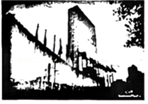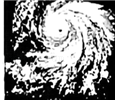






| A. Here's one man's story about test stress. B. Then he rode on a horse through Chang an City, writing a poem. C. Meng Jiao was poor most of his life. D. You worry that you won' t know the right answer. E. Meng Jiao's poem tells about his feelings . F. During his ride, Meng Jiao wrote a poem. |
| A. On June 17, 1967, China detonated (引爆) its first hydrogen bomb. It took only 32 months to go from its first atomic bomb to its first hydrogen bomb. As a nuclear physicist, Yu Min played an important role in this process. |
| B. Su Jiadong made great contributions toward developing Chinese satellite technology and space exploration. He was chief designer of both the Beidou navigation system and China's lunar exploration project. |
| C. Zhang Fuqing was a soldier in the Peoples Liberation Army during the Liberation War. He was twice awarded the title of Combat Hero (战斗英雄). In 1955, he volunteered to work in a distant country in Hubei province and has been helping poor people there ever since. |
| D. Huang Xuhua was the chief designer of China's first-generation nuclear submarine (核潜艇). Long March First, China's earliest nuclear submarine, took its first test dive on Dec 26, 1970. Huang — who was 44 at the time — was on board for the dive. |
| E. Tu Youyou is known for winning the Nobel Prize in Physiology or Medicine in 2015. She got inspiration from traditional Chinese medicine theories and discovered artemisinin (青蒿素), a medicine that can be used to treat malaria. Her finding has saved the lives of millions. |
| F. Shen Jilan, a farmer, is a lifelong lawmaker. In 1954, she became a deputy to the National People's Congress (全国人民代表大会代表). Since then, she has served at all 13 NPCs. She came up with the idea of equal pay for equal work between men and women. The idea was written into China's first constitution. |